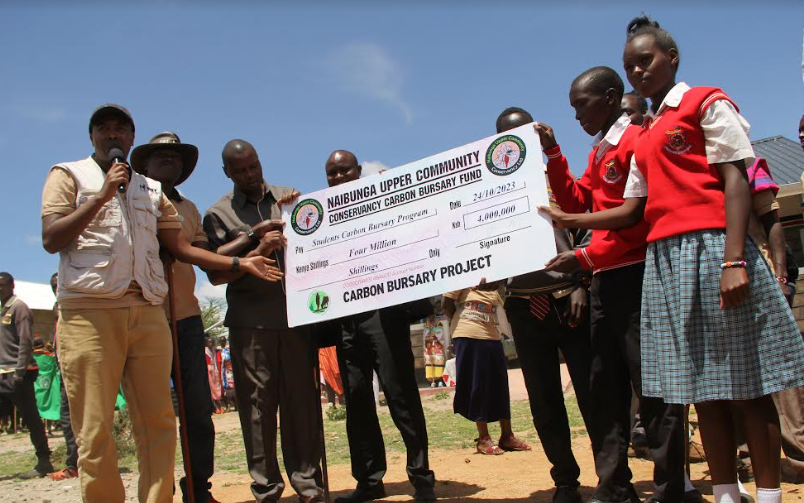Over 700 students in various secondary schools and colleges in Laikipia County have benefited from a Sh. 4 million bursary, courtesy of Carbon Credits money earned by local conservation groups in their bid to conserve the environment.
The bursary, issued by Upper Naibung’a Conservancy in Laikipia North Sub-County, will benefit 642 secondary school students, who will get Sh. 5,000 each per term, while 72 others in various colleges and universities will get Sh. 6,500 per semester.
The bursaries will be paid directly to 72 local secondary schools, 22 tertiary colleges, and 18 universities, where local students learn.
Upper Naibung’a Conservancy Chairman Peter Kilesi said that out of the Sh. 12 million received by the Conservancy from the Carbon Credit project, 60 per cent was set aside for improving community livelihoods, such as offering bursaries and providing water for domestic use.
“The remaining 40 per cent of the funds will be ploughed back to the Conservancy for rangeland management and effective environmental conservation, such as tree and pasture planting,” Kilesi said Tuesday.
He added that the Carbon Credits cash had motivated the local community to be conservation champions, who were ready to conserve their surrounding environment at all costs.
The Northern Rangeland Trust (NRT), an umbrella organisation that manages 43 community conservancies in northern Kenya and the coastal region, said through its Mountain Regional Manager, Aloyce Lekuton, that the conservation efforts by the local communities were bearing fruit, as evidenced by the bursaries and numerous other benefits to improved livelihoods.
Lekuton lauded the management of the beneficiary conservancies for their accountability of the funds, noting that it would give confidence to the local communities.
Other conservancies that have benefited from the carbon credit money are IlNg’wesi, Lekuruki, Central, and Lower Naibung’a.
“We have never received any audit queries from the conservancies under NRT from the Carbon Credit funds. Their accountability levels are commendable,” Lekuton said.
Rosemary Nenini observed that the bursaries would go a long way in cushioning residents in school fee payments since the majority had lost their livestock due to drought.
“Most of the people here are pastoralists and heavily rely on livestock, but due to drought, the majority have lost thousands of animals for the last two years and were unable to send their children to school. We are happy that our children will be back in class,” Nenini said.
A Carbon Credit is a kind of permit that represents 1 tonne of carbon dioxide removed from the atmosphere. They can be purchased by an individual or, more commonly, a company to make up for carbon dioxide emissions that come from industrial production or emissions from automobiles.
Carbon Credits are generated from projects around the world that pull greenhouse gases (GHGs) out of the atmosphere or keep emissions from being released.
Each time a project verifies they have reduced, avoided, or destroyed one metric tonne of GHG, one Carbon Credit is created.
One Carbon Credit has a monetary value on the compliance and voluntary carbon markets of 40 to 80 dollars, on average. However, this can be expected to fluctuate with supply and demand.
By Martin Munyi





